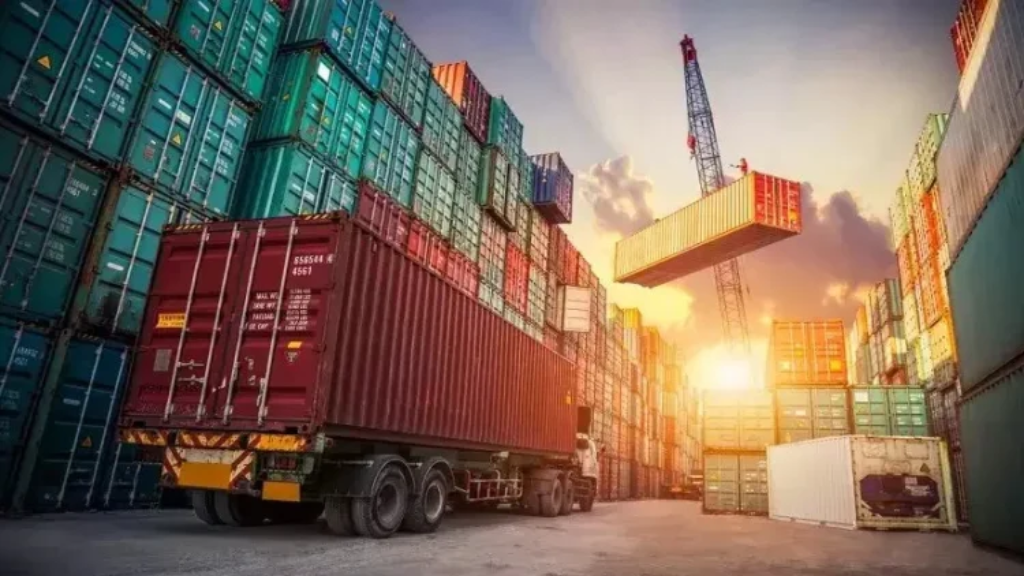Logistics sector to grow in medium term, margins impacted in FY24

High inflation, rising interest rates, and an uncertain global demand scenario impacted domestic demand partly. Owing to their strong linkage to economic activity they acted as headwinds. The operator’s ability to complete the pass-through of operating costs was also affected amid stiff competition, according to industry experts.
New Delhi: Growth in the logistics sector during FY24 was driven by increased mobility amidst stable domestic consumption and buoyant investment demand. Improved e-commerce sales, government’s thrust on infrastructure projects, and expansion of the rural market provided a fillip to the demand for road logistics.
However, high inflation, rising interest rates, and an uncertain global demand scenario impacted domestic demand partly. Owing to their strong linkage to economic activity they acted as headwinds. The operator’s ability to complete the pass-through of operating costs was also affected amid stiff competition, according to industry experts.
Suprio Banerjee, Vice President and Sector Head – Corporate Ratings, ICRA Limited, said, “Due to normalisation of businesses post-covid, and sticky retail diesel prices (though brent crude is down from highs of 2023), companies are unable to raise rates automatically linked to diesel rates, which has impacted the margins for the players in FY2024, since other costs have gone up. Cost rationalization measures undertaken have gradually come back to normal, which has resulted in lower margins for the sector.”
Over the medium term, he is certain that the logistics sector growth would continue to be driven by demand from varied segments including e-commerce, FMCG, retail, chemicals, pharmaceuticals, and industrial goods, coupled with an industry paradigm shift towards organized logistics players, post GST, and e-way bill implementation.
Role of technology
Technologies can help optimize routes, vehicle loading, and scheduling, reducing fuel consumption and delivery times thereby enabling the logistics players to maximize efficiency and respond quickly to the market.
Artificial intelligence (AI) can predict demand patterns, allowing companies to adjust inventory levels and distribution strategies by analyzing historical data and real-time information. It can also monitor and manage the entire supply chain by identifying bottlenecks, mitigating risks, and ensuring smooth operations from procurement to delivery. Robotics and autonomous vehicles are also streamlining warehouse operations, order picking, and transportation, reducing labor costs and human errors.
“AI-driven optimization, IoT-enabled tracking, and blockchain- based transparency can help reduce costs and optimize the operations,” Varun Gada, Director, LP Logiscience, said.
Addressing the common thought against the impact of technology, Krishnan S Iyer, CEO, NDR InvIT Managers, noted that its adoption is not going to result in the reduction in workforce, however there will be realignments.
Road ahead
Fuelled by factors like urbanization, rising consumer demand, improving infrastructure and reducing spending gap between rural and urban India, Tier-2 and 3 cities are becoming increasingly important for the logistics industry.
Vikas Choudaha, Senior Vice President and Business Head, Godrej Storage Solutions, said that India needs more Grade-A warehouse capacities in these towns to accommodate the increasing demand for modern storage and distribution facilities driven by the growth of e-commerce and organized retail. Last-mile delivery remains a significant hurdle, particularly in urban areas, while maintaining supply chain visibility and addressing talent shortages are among the ongoing concerns.
Industry leaders suggest skill development and support for micro, small, and medium enterprises (MSMEs) are also crucial for the growth of the sector.
Challenges
ICRA noted that one of the major challenges is the development of infrastructure in India, with an investment in roads, ports, railways, and airports to improve connectivity. A well-defined regulatory framework related to taxation, permits, and licensing to promote transparency is essential.
Banerjee stated that proper regulations and processes across states can eliminate barriers to interstate movement of goods, reduce transit times, and enhance operational efficiency. Policies supporting the adoption of technology, such as AI, IoT, and digital platforms, can drive efficiency gains and improve overall productivity.
In the last 2-3 years, government launched policies like PM Gati Shakti and National Logistics Policy (NLP), which are aimed at improving the transportation sector’s overall efficiency by integrating road, rail, and sea networks. The Dedicated Freight Corridor (DFC) project also targets to increase the saturation of India’s railway network and congestion on its road network while keeping pace with its growing freight requirement. The policy aims to reduce the logistics costs from the current 12%-14% of the GDP to less than 10%.
To boost trade within and outside the country, other initiatives like Universal Logistics Interface Platform (ULIP), and the Open Network for Digital Commerce (ONDC) were introduced.
“While efforts have been made to promote intermodal freight transportation, there are still challenges related to coordination between different modes of transport and regulatory inconsistencies. Policy interventions to facilitate seamless intermodal connectivity would enhance efficiency and reduce logistics costs,” Gada of LP Logiscience said.
Similarly, there is a push for green logistics initiatives, but compliance with environmental regulations and adoption of sustainable practices can pose challenges for logistics companies, particularly smaller players. Clear guidelines and incentives for adopting environmentally friendly practices could support industry-wide sustainability efforts.
Talking on similar lines, Anand Mimani, CEO, GreenLine Mobility Solutions, suggests that fostering public-private partnerships for infrastructure development projects can help bridge funding gaps and accelerate progress.
“The sector faces challenges related to supply-demand dynamics, fluctuating interest rates, and the difficulty in passing on increased costs to customers. To effectively navigate these challenges, logistics operators need to closely monitor market dynamics and adjust pricing strategies to offset rising input costs, thereby maintaining profitability and competitiveness in the industry,” he added.
Addressing these regulatory challenges and implementing appropriate policy interventions will be crucial for unlocking the full potential of the Indian logistics sector and supporting the country’s economic growth and competitiveness.
